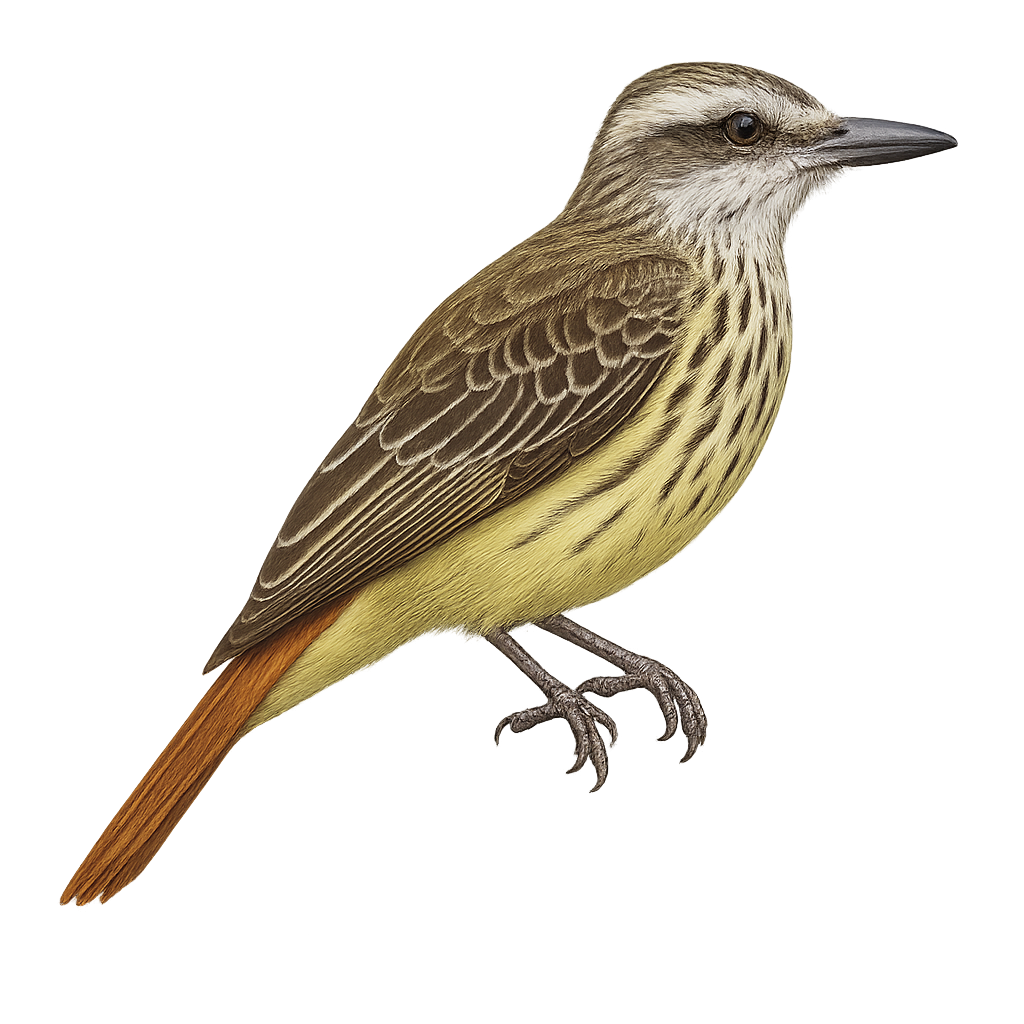Your wildlife photography guide.
Explore the sulphur-bellied flycatcher in detail, study its behavior, prepare your shots.
Where to observe and photograph the sulphur-bellied flycatcher in the wild
Learn where and when to spot the sulphur-bellied flycatcher in the wild, how to identify the species based on distinctive features, and what natural environments it inhabits. The WildlifePhotographer app offers tailored photography tips that reflect the sulphur-bellied flycatcher’s behavior, helping you capture better wildlife images. Explore the full species profile for key information including description, habitat, active periods, and approach techniques.
Sulphur-bellied Flycatcher
Scientific name: Myiodynastes luteiventris

IUCN Status: Least Concern
Family: TYRANNIDAE
Group: Birds
Sensitivity to human approach: Suspicious
Minimum approach distance: 10 m
Courtship display: May to June
Incubation: 14-16 jours
Hatchings: May to July
Habitat:
Open forests, wooded areas, forest edges
Activity period :
Primarily active during the day, with peak activity in the morning and late afternoon.
Identification and description:
The Sulphur-bellied Flycatcher is a medium-sized bird known for its bright yellow belly and brownish wings. It primarily inhabits open forests and wooded areas in Central America and the southwestern United States. This bird is often seen perched on branches, from which it launches to catch flying insects. Its call is a distinctive whistle that echoes through its natural habitat. A migratory species, it winters in South America. The Sulphur-bellied Flycatcher is a solitary bird outside the breeding season, during which it becomes more territorial. Its ability to adapt to various habitats allows it to maintain a stable population despite environmental changes.
Recommended lens:
400 mm – adjust based on distance, desired framing (portrait or habitat), and approach conditions.
Photography tips:
To photograph the Sulphur-bellied Flycatcher, it is advisable to use a telephoto lens of at least 400mm to capture detailed images without disturbing the bird. Look for areas where the bird is active, such as forest edges, and be patient. Morning is often the best time to observe and photograph this bird, as it is more active at this time. Make sure to maintain a safe distance of at least 10 m to avoid disturbing it.
The WildlifePhotographer App is coming soon!
Be the first to explore the best nature spots, track rutting seasons, log your observations, and observe more wildlife.
Already 1 430 wildlife lovers subscribed worldwide

